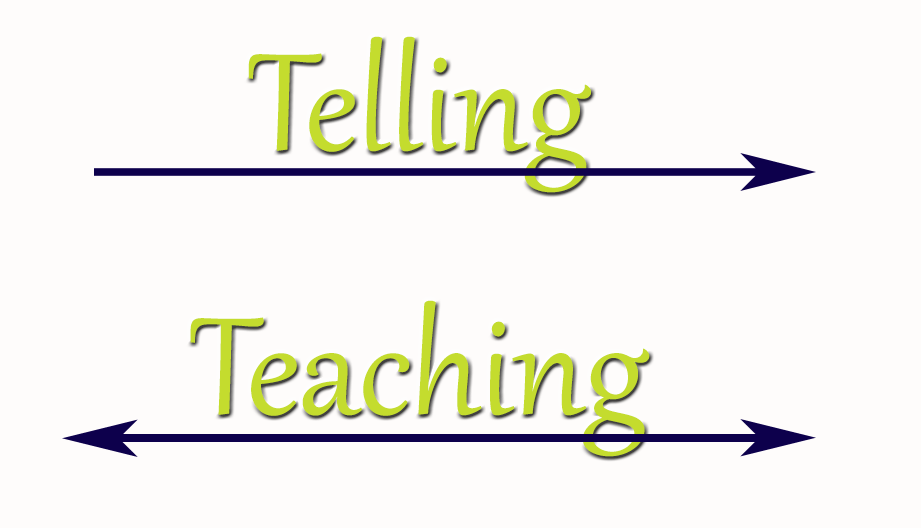Tell means "to relate in detail; to give utterance to," while teach means "to cause to know something; to cause to know how." Telling requires nothing on the part of the audience. In fact, it doesn't require an audience at all. You can tell a recorder or you can tell thin air. Teaching, by contrast, requires learning. Thus, teaching requires both a teacher and a learner.
Why does this matter? If you are in the habit of telling without assuring learning, you might be diminishing your effectiveness in multiple ways:
- Your assistant requires multiple instructions, when one slightly longer and more thoughtful discussion would have conveyed your intent fully the first time.
- Your assistant makes mistakes based on misunderstanding, requiring corrected or additional instruction.
- Your associates don't gain all they can from your experience and expertise, limiting and delaying their growth.
- Your associates experience unnecessary frustration, causing retention and profits to suffer.
- You and your colleagues don't exchange knowledge fully, limiting your ability to collaborate and leverage your individual expertise for the greater good of your firm.
Is it the responsibility of your assistants, associates and colleagues to listen and learn when you tell? Of course. However, it is perhaps your responsibility and most certainly in your best interest to increase the odds of their learning by improving your teaching techniques. How can you do that? Thoughtful telling, powerful questioning and active listening are fundamental to good teaching. Apply them along with - and as part of - these three teaching techniques and you'll greatly improve your effectiveness:
Combine visual and verbal instructions to increase the odds of effectively conveying information. Thus, if your assistant or associate sees you when you provide instructions or if you include a diagram or some kind of visual guide with instructions, your intent will be clearer and more powerful. Is this necessary for every interaction? Of course not, but keep it in mind for your most important instructions or first-time instructions for a new task or project. Similarly, if your associate observes you delivering instructions to an assistant or an opening statement in court, he or she will learn more than if you simply tell him or her how it's done. Your behavior is your most potent form of combining visual and verbal instruction, so be conscious of it. Be sure the message you convey with your behavior is the one you want others to learn.
Provide experiential learning to speed and deepen learning. Creating the opportunity to learn with all available senses, known as experiential learning, is the most effective method of teaching. It requires interaction with the learner. Thus if you prepare in person with your associate for a client meeting, attend the meeting together and debrief at the close of the meeting, your associate will learn more fully and rapidly than if you just tell him or her about part or all of the meeting process and/or its outcomes. Again, you must judge when this is appropriate and cost effective, but do so with the knowledge that it will have the fastest and greatest impact on your associate's knowledge base.
Demonstrate your willingness to learn. We all have the opportunity to be master teachers and learners. The key is to do both consciously, to teach and learn what we choose and to recognize that teaching is not limited to a top down hierarchy. We can learn equally well from our assistants, our associates, our colleagues and our seniors, if we allow ourselves. For example, if you share research both visually and verbally, ask questions and actively listen to multiple layers of seniority within your firm when preparing for a sales meeting with a prospective client, you can learn more fully about your prospect's business and industry and about your own colleague's relevant experience and expertise.
Whether you measure results by satisfaction, time, cost or revenue, it's worth the effort to elevate your telling to the level of masterful teaching.

